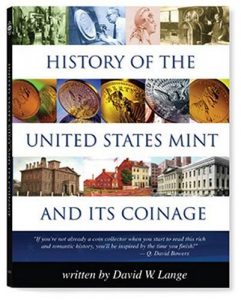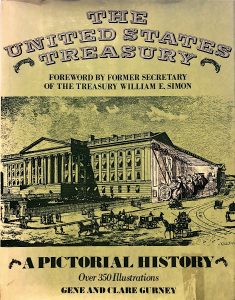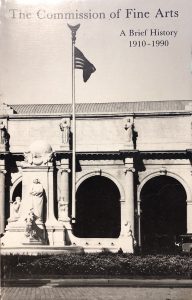With the announcement that the coalition of northeast states will continue their stay-at-home order at least through May 15, it is time to turn off the news and think about something else.
Since the kids are doing their homework without a teacher, you can pick up a book or two and learn something about the hobby we love.
The inspiration for today’s Quarantine Reading List came from a reader asking about the history surrounding the institutions that create the numismatic products.
Although many books explain the manufacturing processes and describe the history, the goal of this list is to suggest well written and accessible books on each topic. If the publication is available online, there will be a link to read it or download a copy.
U.S. Mint
 Of all the money manufacturing institutions, the U.S. Mint has the most documented history. There are so many good books about the Mint’s history it is difficult to narrow down a recommendation to one book. If you are going to read one book, read History Of The United States Mint and Its Coinage by David Lange.
Of all the money manufacturing institutions, the U.S. Mint has the most documented history. There are so many good books about the Mint’s history it is difficult to narrow down a recommendation to one book. If you are going to read one book, read History Of The United States Mint and Its Coinage by David Lange.
Whether you read for knowledge or pleasure, it is always best when it is well written. David Lange’s reputation as a great writer is on full display in this book. Using his skill, Lange writes a broad context of the history of the U.S. Mint fitting it in 190 pages with images of coins, vignettes, and documents of the time. After you finish, give the book to your young numismatist who will also enjoy it.
History Of The United States Mint and Its Coinage is no longer in print but can be found on the secondary and used book market.
Bureau of Engraving and Printing
 The Bureau of Engraving and Printing started in 1862 in the basement of the Treasury Building as the National Currency Bureau. Their first job was to separate currency notes produced by private banknote printing companies. The newly formed bureau started its printing operations in 1863.
The Bureau of Engraving and Printing started in 1862 in the basement of the Treasury Building as the National Currency Bureau. Their first job was to separate currency notes produced by private banknote printing companies. The newly formed bureau started its printing operations in 1863.
The BEP grew out of the necessity to fund the Civil War. From there, the bureau became the primary security printing service for the government. To learn more about the BEP and its growth, read History of the Bureau of Engraving and Printing. Produced for the 100th Anniversary of the BEP, the book is the most comprehensive coverage of its history.
For those looking to save money, the book is available online. It does not have copyright restrictions since it was produced by the BEP and printed by the Government Printing Office. You can download the book in many electronic formats from Newman Numismatic Portal and the Internet Archives. Download the book now and start reading!
Department of the Treasury
 The Treasury Department is the only Cabinet-level department whose history mirrors the country’s history. Although there has been a lot written about Treasury, most of the book covers a specific era of history. Whether the subject is the founding of the department by Alexander Hamilton, the Gold Rush era, or the transition to working with the Federal Reserve starting in 1913, you can find a book that will expand on Treasury’s history.
The Treasury Department is the only Cabinet-level department whose history mirrors the country’s history. Although there has been a lot written about Treasury, most of the book covers a specific era of history. Whether the subject is the founding of the department by Alexander Hamilton, the Gold Rush era, or the transition to working with the Federal Reserve starting in 1913, you can find a book that will expand on Treasury’s history.
For a good overview that discusses the history of the department and reconizes the production of money through the years is The United States Treasury: A Pictorial History by Gene and Clare Gurney.
Written in 1978, it is not an academic study of the Treasury Department. The book provides a pictorial overview along with the story of Treasury with over 350 illustrations in 216 pages.
Of course, you can buy the book and have it as a perpetual reference. If you want to “borrow” an electronic book, you can do so at the Internet Archives. Once you create a free account on the Internet Archives, you can check out an electronic version for two weeks.
Commission of Fine Arts
 Although the Commission of Fine Arts is not part of the manufacture of money, it wields influence on the designs of the coins struck by the U.S. Mint. The first influence the CFA had on coin design was for the 1921 Peace Dollar. It was the CFA that managed and selected the competition that was won by Anthony de Francisci.
Although the Commission of Fine Arts is not part of the manufacture of money, it wields influence on the designs of the coins struck by the U.S. Mint. The first influence the CFA had on coin design was for the 1921 Peace Dollar. It was the CFA that managed and selected the competition that was won by Anthony de Francisci.
In 1976, the CFA published the initial version of the commission’s history. They produced updates every five years with the last published in 1996 that covers its history through 1995. Most of the book does not mention its ties to numismatics until the 1985-1990 additions.
It is difficult to find physical copies of the later version of the book. The most common version found on the secondary market was the one published in 1986, before their involvement with the American Eagle program. But as a government publication, it is available online at the Internet Archive. As with other electronic books downloadable from the Internet Archive, it is available in many different formats depending on your device.
SUMMARY
- History Of The United States Mint and Its Coinage by David Lange.
- History of the Bureau of Engraving and Printing can be read online from the Internet Archives,
- The United States Treasury: A Pictorial History or borrow an online ebook from the Internet Archives.
- Download a copy of The Commission of Fine Arts: A Brief History 1910—1995 from the Internet Archives.
Reading is an excellent way to pass the time.
Stay healthy! Stay safe!


Scott
Great idea! I recently bought from the Royal Australian Mint Inside the Vault-The History and Art of Australian Coinage by Peter Rees. I haven’t read it yet but I have looked through it and it looks good.
Buying from the RAM at WFM’s got me interested in their coinage. Also, my father was in the Pacific Theater of WWII and brought back Australian money.
Sincerely
Bob Graul